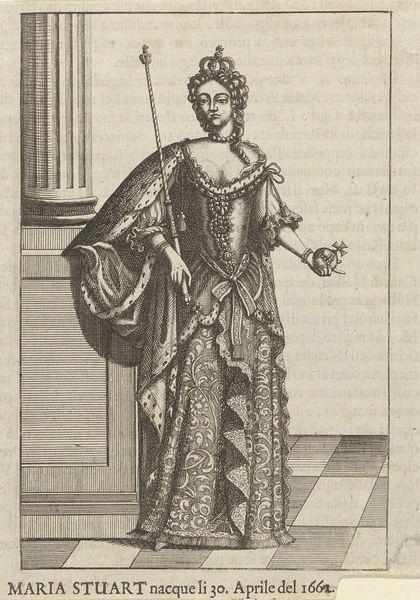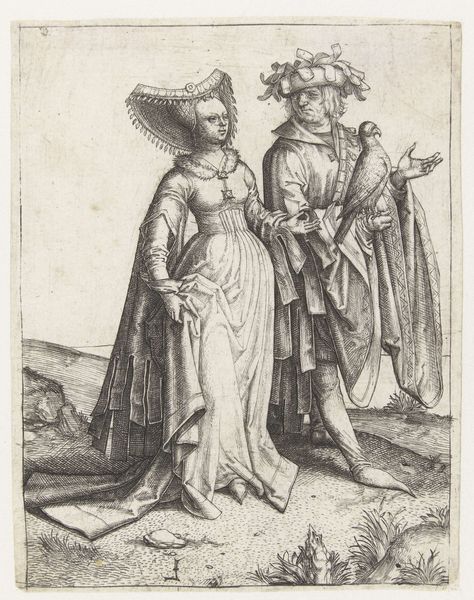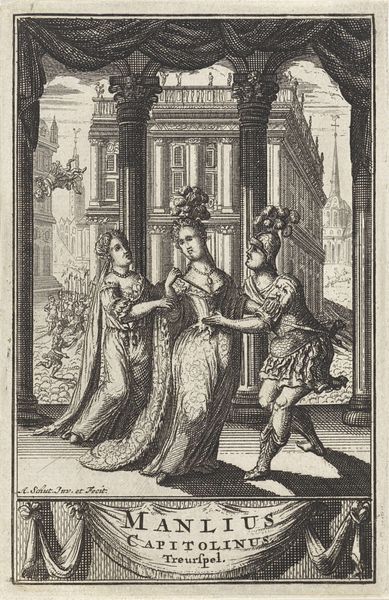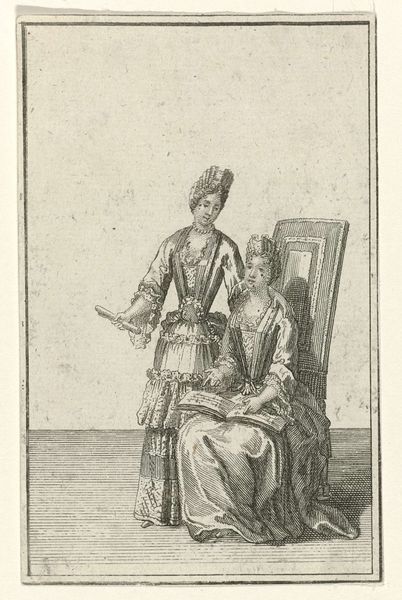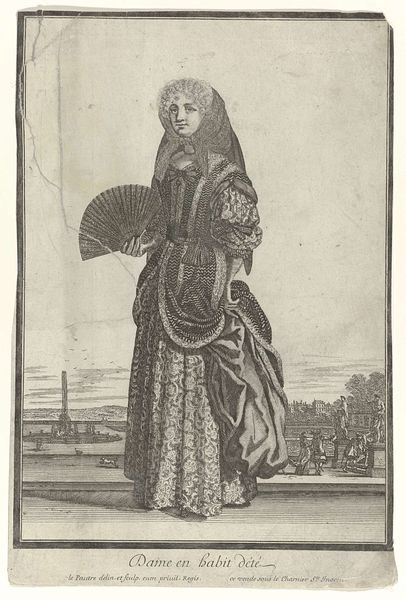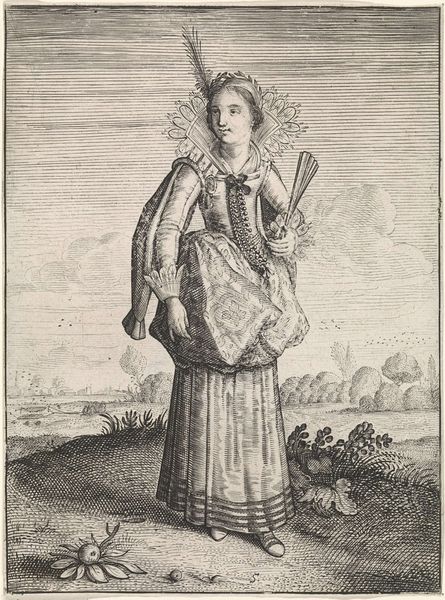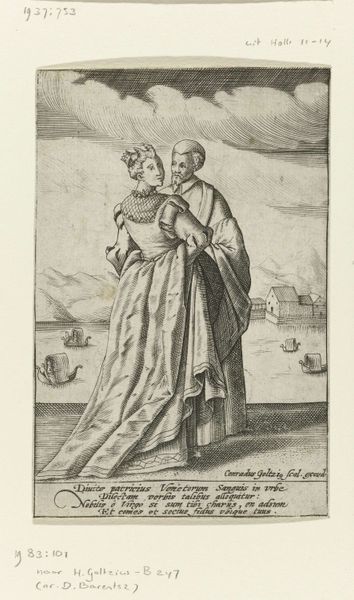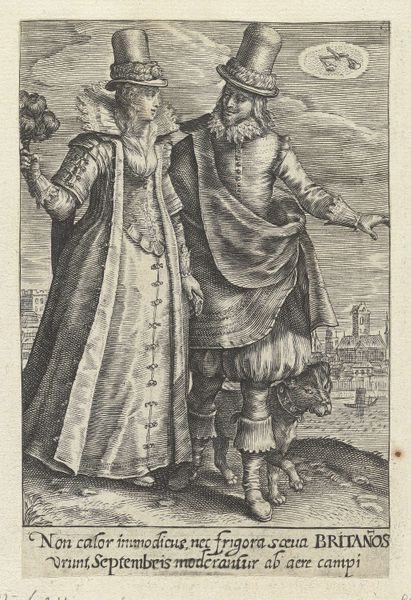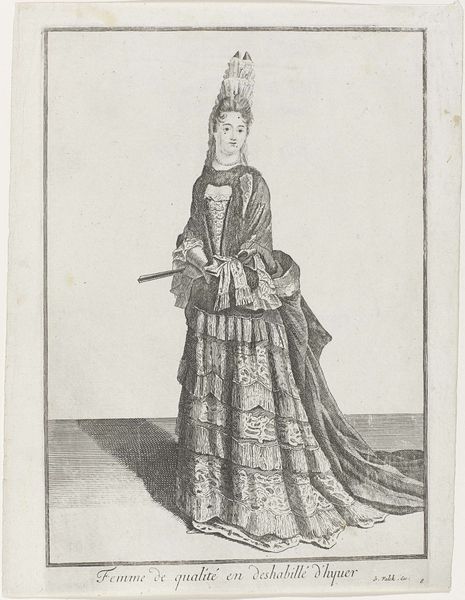
engraving
#
portrait
#
baroque
#
genre-painting
#
dress
#
engraving
Dimensions: height 104 mm, width 67 mm
Copyright: Rijks Museum: Open Domain
Curator: Let’s turn our attention to this engraving by Bernard Picart, "Vrouw in manteau en man in justaucorps," dating, rather broadly, from 1683 to 1733. What strikes you immediately about it? Editor: It feels like a captured moment of performative luxury. Look at the woman's ornate dress, the man’s elaborately styled wig and patterned coat; there is such meticulous detail for something produced by etching on metal. The rigidity of the linear detail evokes constraint to me; how would you position this work within a sociopolitical context? Curator: Well, the dress code visible here is profoundly telling. Clothing of this era was not merely decorative; it symbolized status, power, and belonging within an incredibly rigid social hierarchy. The ‘manteau’ and ‘justaucorps,’ referenced in the title, are essential garments, reflecting both gender and class distinctions. I would note that these restrictive fashion norms primarily affected women who were routinely used as pawns, controlled within society. Editor: I can’t help but consider gendered roles in this piece as well. Notice how the man's pose seems rather performative, perhaps embodying traditional masculine ideals, while the woman, with her extended hand and fan, seems to communicate awareness and agency, challenging passive female stereotypes. It would be helpful to note that social restrictions impacted artistic practices too, especially with women whose entry into fine art production remained highly restricted at this time. Curator: Indeed. These pieces were widely consumed through printed form; this reveals much about the public's access to depictions of idealized, upper-class life at that time. The widespread dissemination of fashion plates such as this one solidified visual regimes, constructing hierarchies but also sparking aspiration. We should not dismiss such imagery’s potency in crafting cultural identity. Editor: Agreed. By examining social structures and power dynamics, this work unveils deeper themes surrounding class, identity, and societal norms. Picart captures an era of intense social stratification, inviting reflection on its reverberations on gender and class through time. Curator: What this era signifies continues to echo in our understanding of today’s contemporary values around fashion and social identity, and their continuous play within shifting power structures.
Comments
No comments
Be the first to comment and join the conversation on the ultimate creative platform.



